Latest posts
Lost worlds: via Sketchfab a 3D fossil offers a glimpse of prehistoric marine life
Chris Armit - April 1, 2019
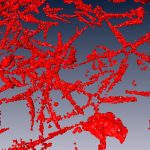
Just out in full text is a our first paper showcasing our latest complete integration with the Sketchfab 3D viewer. In this a 3D fossil seabed from the lower Devonian geologic period has been digitally reconstructed using micro X-ray computed tomography (microCT) imaging. A section of the fossil bed, measuring 2 x 1 metres wide […]
Citizen Science goes mainstream. Back at the UN with the Citizen Science Global Partnership.
Scott Edmunds - March 29, 2019
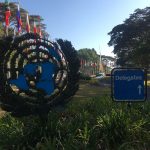
Citizen Science at UNEA4 As GigaScience has the aim of opening and democratising science as far as it can go, we even work towards the involvement of non-professional “citizen scientists” in the scientific process. Regular readers of this blog and journal will have seen the many crowdfunded and educational community genome projects we have promoted […]
Visualising Biological Data. GigaScience at VIZBI
Chris Armit - March 22, 2019

The 10th anniversary of the EMBO Workshop: Visualising Biological Data (VIZBI 2019) took place in EMBL in Heidelberg last week. GigaScience Data Scientist Chris Armit was there and was astonished at the cinematic quality of the visualisations that were showcased over this 3-day meeting. VIZBI aims to improve the global standard of data visualisation in […]
GigaScience at ESRIC Super-Resolution Clinic
Chris Armit - March 4, 2019
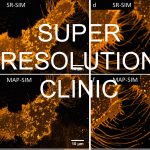
The diffraction limit of a microscope hinders the ability to see single molecules as the optics do not allow the researcher to distinguish between two fluorescently labelled molecules that are less than 200nm apart. As a means of overcoming this barrier, super-resolution microscopy utilises various tricks to go beyond the diffraction limit and image sub-cellular […]
Genomes from paradise
Hans Zauner - January 30, 2019

New genomic data from five birds-of-paradise reveal genes that are shaped by selection and help explain the origin of their spectacular plumage. Birds-of-paradise, with their elaborate and colorful feathers and their complex courtship displays, are a school-book example of sexual selection. However, little is known about the genetic variants that distinguish the lavishly colored birds-of-paradise […]
Planetary Genomes. Creating a Digital Botanical Garden.
Scott Edmunds - January 28, 2019
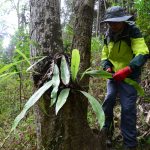
Our Biggest Dataset Yet. Oh, Ruili? A new Data Note provides genome sequencing data that effectively triples the number of plant species with available genome data. This mammoth amount of work comes on the back of the growing efforts of the scientific community to sequence more plant genomes to aid in understanding their complex evolution […]
Authorship Down. Tackling Misguided Incentives.
Scott Edmunds - January 14, 2019

Assuring Appropriate Authorship. In our day-to-day work at GigaScience many of the most common and reoccurring problems we keep encountering relate to appropriate authorship. In this “publish or perish” world of science, getting authorship right is of course important. There are many issues that underlie the appropriateness of authorship, but fortunately there are internationally recognised […]
Prizes given and received, and other 2018 highlights
Hans Zauner - December 20, 2018

2018 was yet another eventful year at GigaScience. Before most of the editors and data curators take a few days of well-earned break from handling Giga-papers and Giga-data, it’s time to look back over this year’s highlights – of which there are many. Prizes were handed out and received, we travelled to conferences all over […]
Meet the GigaScience ICG Prize Winner, Pt. 2: Lisa Johnson Q&A
Scott Edmunds - December 14, 2018
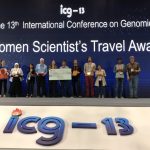
Yesterday we published the winning paper of the second GigaScience prize, with additional detail and coverage in GigaBlog describing why we and the judging panel found it so novel. This was an impressively case study in reproducibility, reassembling & reannotating around 700 microbial eukaryotic transcriptomes to demonstrate this approach can aid in revealing new biologically relevant […]
Reprocessing the Microbial Genomic Goldmine: Winner of the ICG13 Prize
Scott Edmunds - December 13, 2018

Out today is the winner of our ICG13 Prize, presenting work that can aid in revealing new biologically relevant findings and missed genes from previously generated transcriptome assemblies. Teaching old data new tricks, and maximising every last nugget of information from previously funded research. Here we present some insight into why the reviewers and judges […]